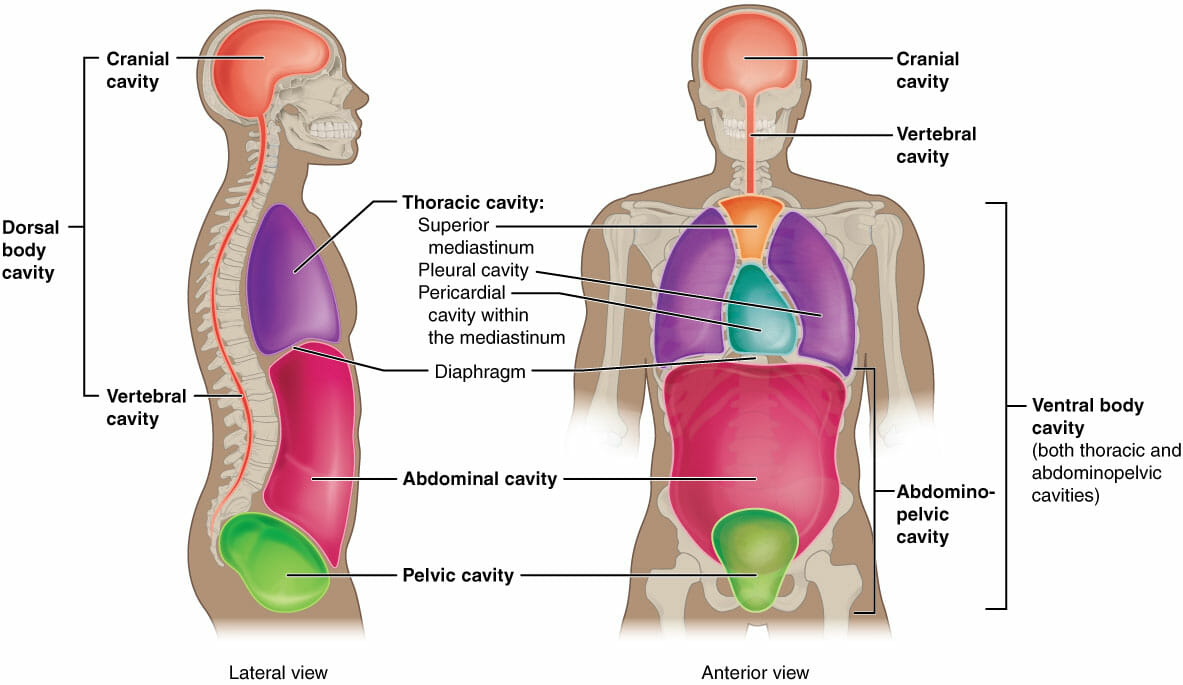The Organs of the Abdominopelvic Cavity
Published .
The anatomy of the body is organized in cavities

Organs of the abdominopelvic cavity
The abdominopelvic cavity can be subdivided into four quadrants. The quadrants are labeled by location: the right upper, right lower, left upper, and left lower quadrants. The purpose of the abdominal divisions is to describe regional anatomy in the abdomen, and to help clinicians determine which organ and tissues are involved in a disease based on which regions experience pain.

Right Upper Quadrant
The right upper quadrant contains the right portion of the liver, the gallbladder, right kidney, a small portion of the stomach, the duodenum, the head of the pancreas, portions of the ascending and transverse colon, and parts of small intestine. Pain in this region is associated with infection and inflammation in the gallbladder and liver or peptic ulcers in the stomach.
Left Upper Quadrant
The left upper quadrant is the location of the left portion of the liver, part of the stomach, the pancreas, left kidney, spleen, portions of the transverse and descending colon, and parts of the small intestine. Pain in this region is associated with malrotation of the intestine and colon.
Right Lower Quadrant
In the right lower quadrant sits the cecum, appendix, part of the small intestines, the right half of the female reproductive system, and the right ureter. Pain in this region is most commonly associated with appendicitis.
Left Lower Quadrant
The left lower quadrant houses the majority of the small intestine, some of the large intestine, the left half of the female reproductive system, and the left ureter. Pain in this region is generally associated with colitis (inflammation of the large intestine) as well as pelvic inflammatory disease and ovarian cysts in females.

